Hoya kerrii
Are you in the market for a long term relationship?
If so, let me introduce you to sweetheart hoya. Sweetheart hoya, please meet our dear reader. (Yes, I may be playing matchmaker here.)
With its big, green, heart-shaped leaves, this houseplant is a real charmer – one that will not break your heart.

We link to vendors to help you find relevant products. If you buy from one of our links, we may earn a commission.
If long vines covered with big green hearts weren’t already a sweet enough deal, this houseplant also comes with the bonus of lovely, fragrant blossoms, even when grown indoors – and it’s also supremely easy to propagate to make new plants.
With the right care, this houseplant will be a faithful companion for many, many years.
To see if this is a match made in heaven for you, I’m going to cover everything you’ll need to know to grow and care for this houseplant – in hopes that this sweetheart remains more than just a passing fling.
Here’s what’s ahead:
What You’ll Learn
But before we get started, if you’re looking for general guidance for all types of hoyas and would like to learn more about this fascinating genus, read our comprehensive guide to growing and caring for hoyas.
What Is Sweetheart Hoya?
Hoya kerrii is an epiphytic plant that climbs and twines as it grows, attaching itself to trees with its aerial roots.
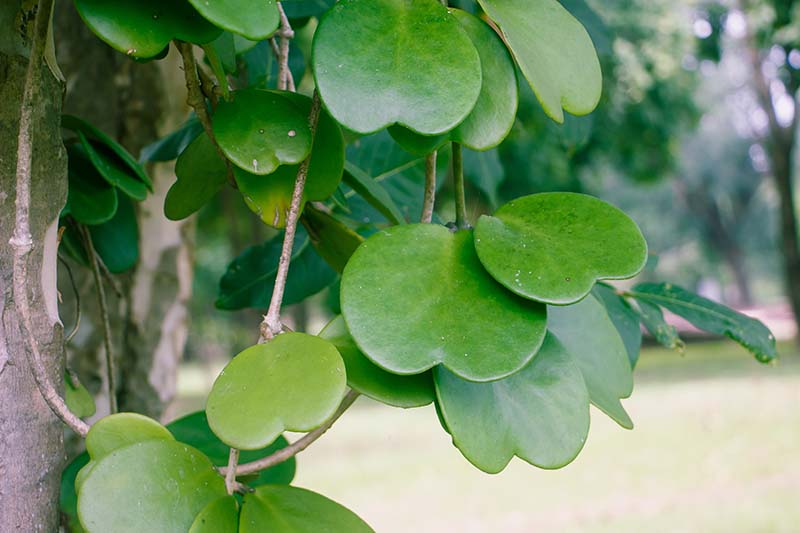
In reference to its heart-shaped leaves, this species is commonly called “sweetheart hoya,” “Valentine hoya,” and “heart leaf hoya.”
The plant has thick, succulent leaves, which allow it to store water during periods of drought.
The leaves are smooth and grow oppositely on long vines, with new leaves starting off very tiny when they emerge.
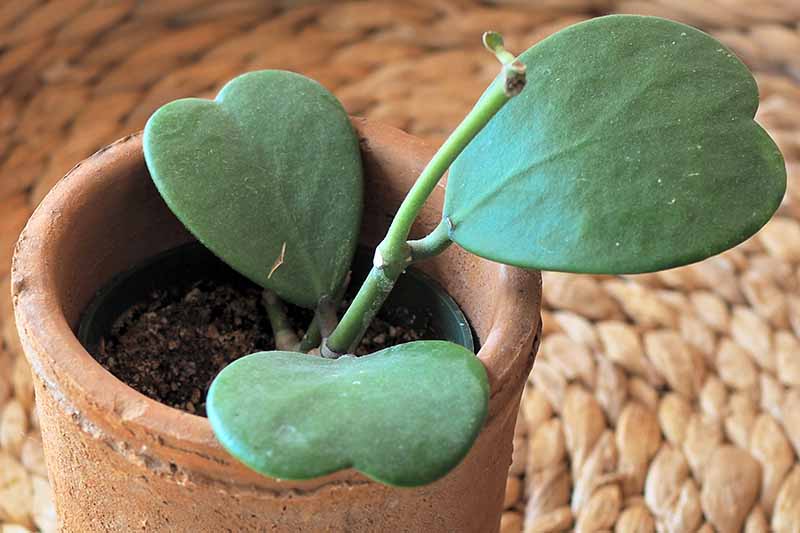
Compared to many other species of hoyas, the vines of H. kerrii are quite thick and can be rather stiff.
Easy to encourage to bloom indoors, sweetheart hoya produces fragrant and showy flower clusters that are long-lasting. Its individual flowers are creamy white with russet centers.
Shaped like little stars, these flowers have five petals and are waxy, perhaps giving this plant another of its common names, “wax hearts.”
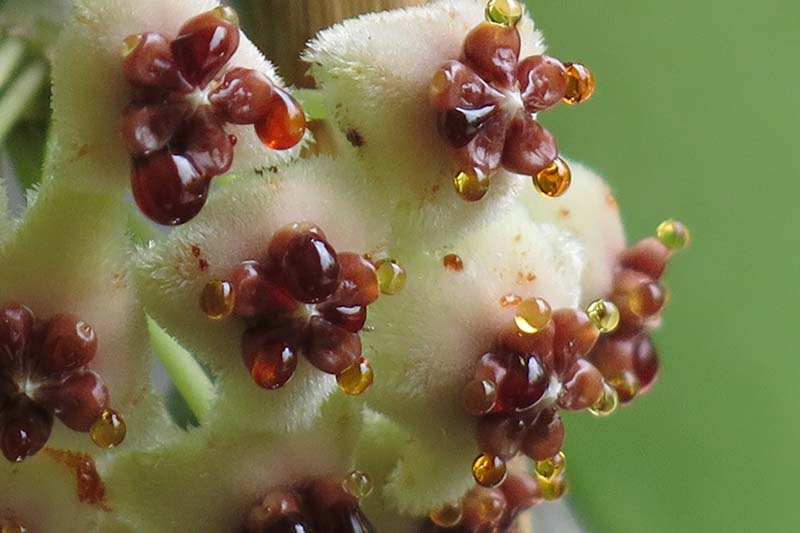
Valentine hoyas can be astoundingly slow growers. Sometimes they just sit there and do nothing for years, before finally putting on new growth.
However, once they feel good and ready to grow, their vines can achieve impressive lengths, growing to be 10 feet long or more.
Like many other hoyas, this species will produce long tendrils which are bare at first. The purpose of these long tendrils is to climb trees, permitting them to grow higher into the forest canopy in the wild.
Cultivation and History
A tropical species, H. kerrii is native to Cambodia, Java, Laos, Malaysia, Thailand, and Vietnam.
Valentine hoya is in good company within its genus, related to other well-loved hoya species and cultivars such as H. obovata, H. carnosa ‘Tricolor,’ and H. australis ‘Lisa.’
You can learn more about these and other species and cultivars from this genus in our article on 29 of the most fabulous hoyas.
This species was named in honor of Irish medical-doctor-turned-botanist Arthur Francis George Kerr, who is often called the founding father of Thai botany.
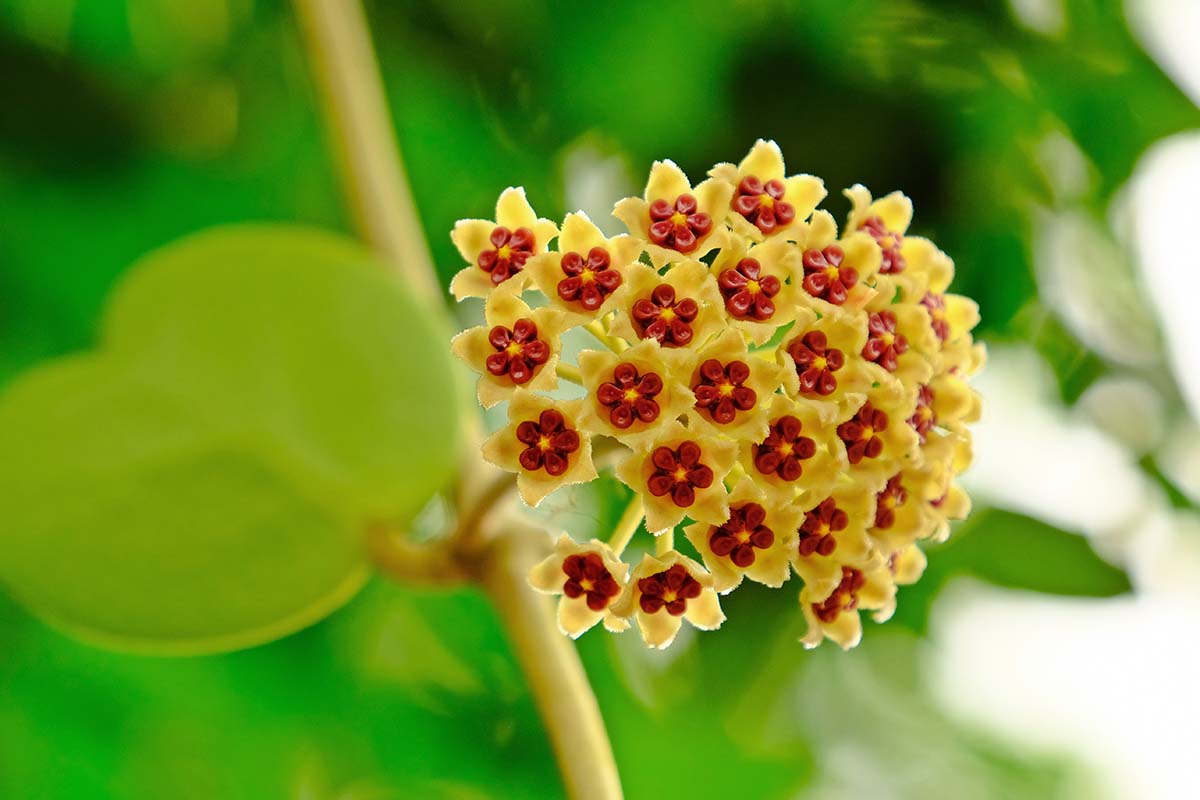
In addition to its close relatives within the Hoya genus, this plant is also related to milkweed, which will not surprise you if you study their blooms side by side. Both hoyas and milkweeds are members of the Apocynaceae or dogbane family.
And like many of its milkweed relatives, H. kerrii produces a latex-like sap when its leaves or vines are damaged.
Sweetheart hoya is known for its thick, fleshy leaves, and while these plants are cared for much like succulents, they are not near relatives to members of the cactus family or other well-known succulents such as aloe.
Wax hearts are commonly sold around Valentine’s Day in a single leaf form, to look like a green heart in a small pot.
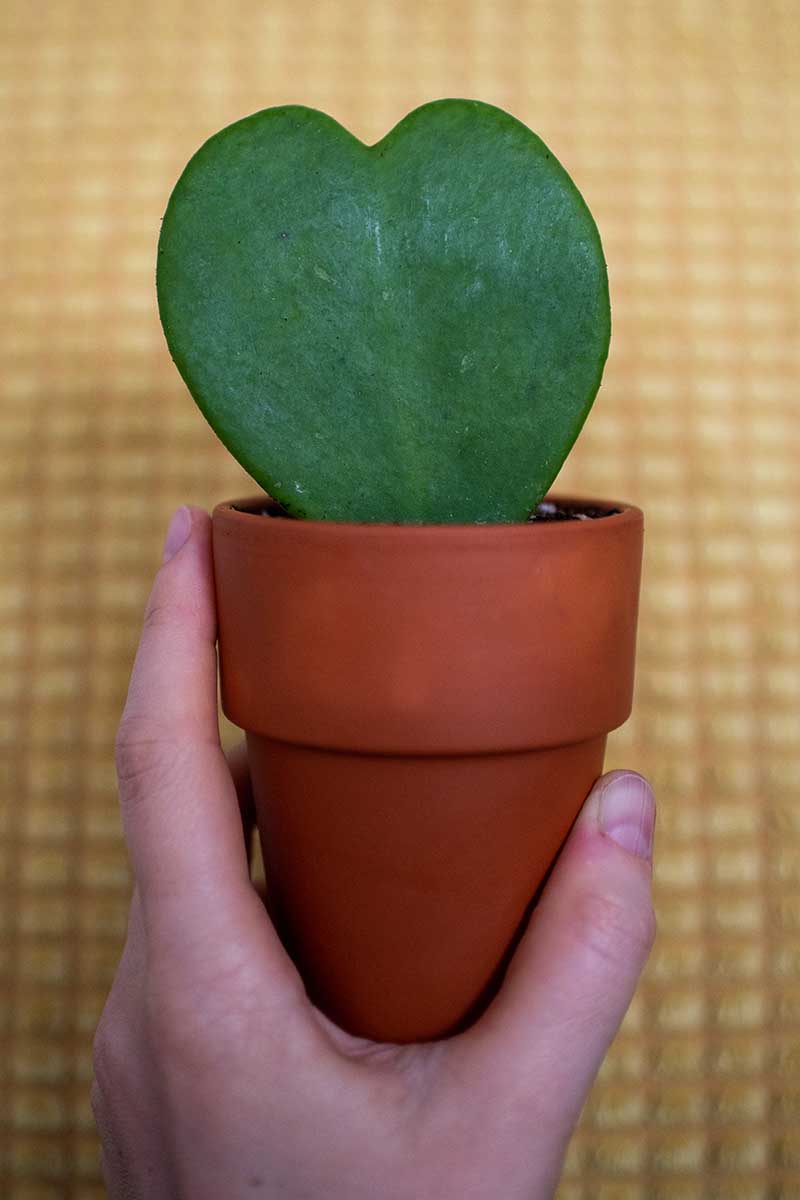
While these specimens are cute, they may never grow to be majestic, vining houseplants. Keep reading to learn more about why this is the case.
Wax hearts are great for homes with small kids or pets since they are considered nontoxic, and can be grown outdoors year-round in USDA Hardiness Zones 10a to 11b.
Propagation
Hoyas are fun plants to have around because they are so easy to propagate – and sweetheart hoya is no different. Although it’s easy to propagate, you’ll probably want to keep in mind that this species likes to take its sweet time producing new growth.
Wax hearts can be propagated from leaf cuttings, stem cuttings, or by layering – if plant propagation is one of your hobbies, you might want to try all three methods and see which works best for you. We’ll have a look at propagating leaf cuttings first.
But before we get started, you may want to grab some gloves – wax hearts produce a milky sap that can cause skin irritation in some individuals.
From Leaf Cuttings
There is some controversy around propagating H. kerrii leaves, although this is probably the most common way this species is sold – in its single leaf form.
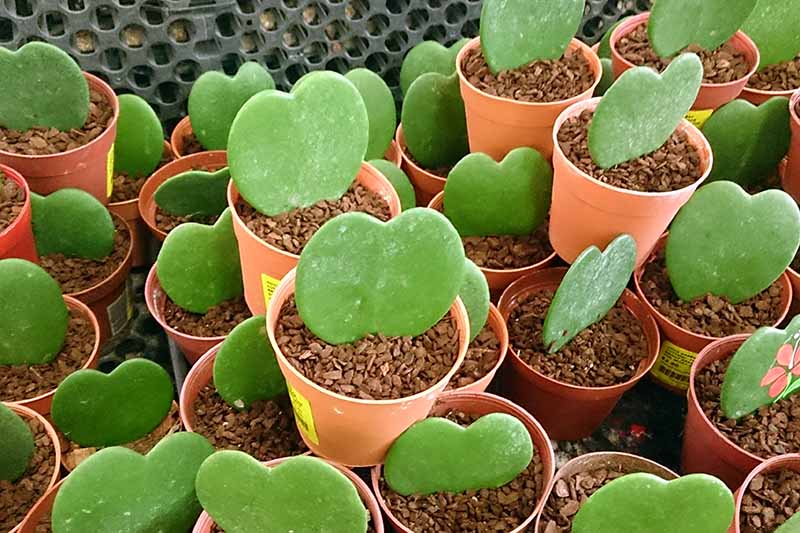
All healthy leaf cuttings taken from wax hearts can produce roots, but leaf cuttings made without including any plant tissue from the node of the parent plant are unlikely to grow into a new, full-sized specimen.
Leaves propagated in this way usually live for a few years with proper care, remaining the same size – just a single, rooted leaf – before they eventually die.
However, some gardeners occasionally get lucky, and their leaf cuttings, even those without apparent nodes, eventually grow into new plants.
When you’re doing the leaf propagation yourself, you have a choice.
If you’re fine and dandy with a little green leaf that may never turn into a larger specimen, you can cut the leaf from the vine without worrying about taking any of the node.
However, to ensure your leaf cutting will turn into a fully vining wax hearts and doesn’t just remain a rooted leaf, include some of the node when you take the cutting.
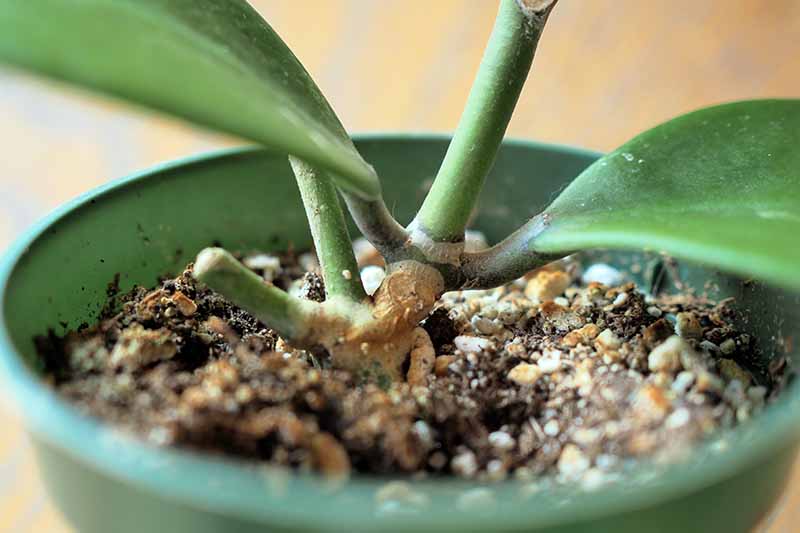
Ready to try it out? You’ll need a clean two-inch pot, some fresh potting medium, a plastic bag, and a utility knife.
Fill the pot with the growing medium, leaving half an inch of the container clear between the surface of the soil and the rim of the pot.
Sterilize the utility knife with rubbing alcohol or hydrogen peroxide, and take your leaf cutting, keeping the petiole (the small stem between the vine and the leaf) as well as some of the node attached to it.
Insert your cutting into the growing medium.
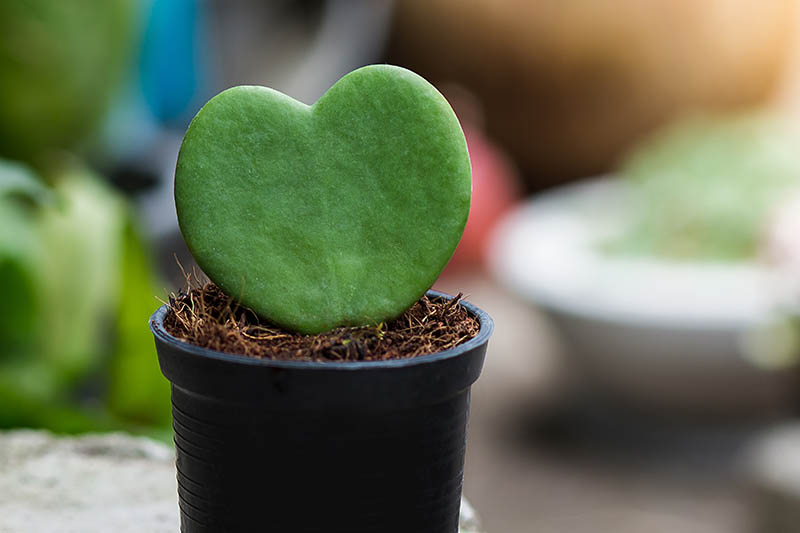
Keep the growing medium moist while the cutting develops roots by watering it with a spray bottle.
Placing the pot in a resealable plastic bag will help to keep the humidity high, meaning you won’t have to water as often. Keep your potted cutting in a location where it will be exposed to bright, indirect light.
Be patient. Hopefully, your cutting should be producing roots within a few weeks. But as mentioned before, this species is quite slow to put on new growth.
One your cutting is rooted, start to transition your wax hearts baby out of its humidity bag and gradually reduce the frequency of your watering visits.
From Stem Cuttings
Hoyas are easy to propagate from stem cuttings, which you can start either in water, or in a growing medium.
Starting In Water
There’s no advantage to starting a wax hearts cutting in water versus rooting it in potting medium, but you might want to do this just for fun, since it will give you a good view of your new hoya’s roots as they grow in their jar.
To start a cutting in water, here’s what you’ll need: a plant with prunable material, a transparent glass jar, filtered water, and a utility knife or a pair of garden snips.
If your hoya has a vine with roots growing from its stem, choose a section of the vine that has at least one node and some roots.
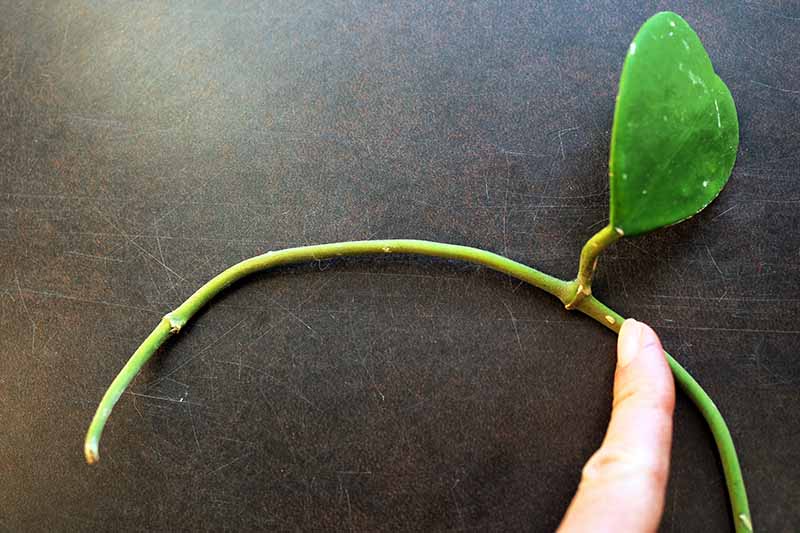
If you don’t have any vines with roots, make a cutting that has two nodes and trim off the bottom leaves.
Place the end of the vine with roots or trimmed off leaves in the water, but leave the top node and leaves above the rim of the jar.
The cutting’s roots will grow quickly in this setup. You can pot up this cutting after its roots have grown to about an inch long. Follow the instructions in the repotting section below.
Starting in Growing Medium
Compared with starting cuttings in water, starting them directly in a growing medium may help to lessen the risk of transplant shock.
There are many different growing mediums and containers you can use to start Valentine hoyas from cuttings, but the method I’m going to describe will reduce the number of steps required to transform your cuttings into potted plants.
For this method, in addition to a prunable plant, you’ll need three- or four-inch nursery pots, growing medium, a spray bottle, resealable plastic bags, and a pair of sterilized scissors or garden snips.
Depending on how full you want your new wax hearts to be, you can either put one or two cuttings in a three-inch pot, or three or four cuttings in a four-inch pot.
As for the growing medium, for this method I recommend the same potting mix you would use to repot your hoya – you’ll get more info on this later in the soil section of the article below, so keep reading.
Fill your pots with growing medium, leaving half an inch to an inch of room between the surface of the soil and the rim of the pot.
Next, grab your sterilized pruners and take cuttings from your parent plant.
The cuttings should have two nodes each and an inch or two of stem beneath the bottom nodes to help anchor the cuttings in the potting mix. If your cutting has roots on its vine, this will make your propagation project even more likely to succeed.
Remove the leaves from the bottom node of each cutting if the stem doesn’t already have roots – this is where new roots will form.
Moisten the growing medium and then insert the cuttings, centering single cuttings or spacing them evenly in pots that will hold more than one cutting.
Situate your cuttings so that the bottom node is at the surface of the growing medium.
To reduce the need for watering, place each pot of cuttings into its own plastic bag. This will keep the humidity higher while your hoya is developing roots. Keep the growing medium moist, watering as needed with a spray bottle.
Place the pots in bright, indirect light.
New roots should start to grow after a few weeks, and new stems or leaf buds should emerge within another few weeks.
Feel free to take one of your cuttings out of its soil at this point to check for roots if you don’t see new growth above the soil.
Once your new specimens seem to be rooted, transition them out of their plastic humidity bags, and care for them as you would a mature specimen.
Layering
Since Valentine hoyas can grow adventitious roots along their stems, it is very easy to propagate wax hearts through layering.
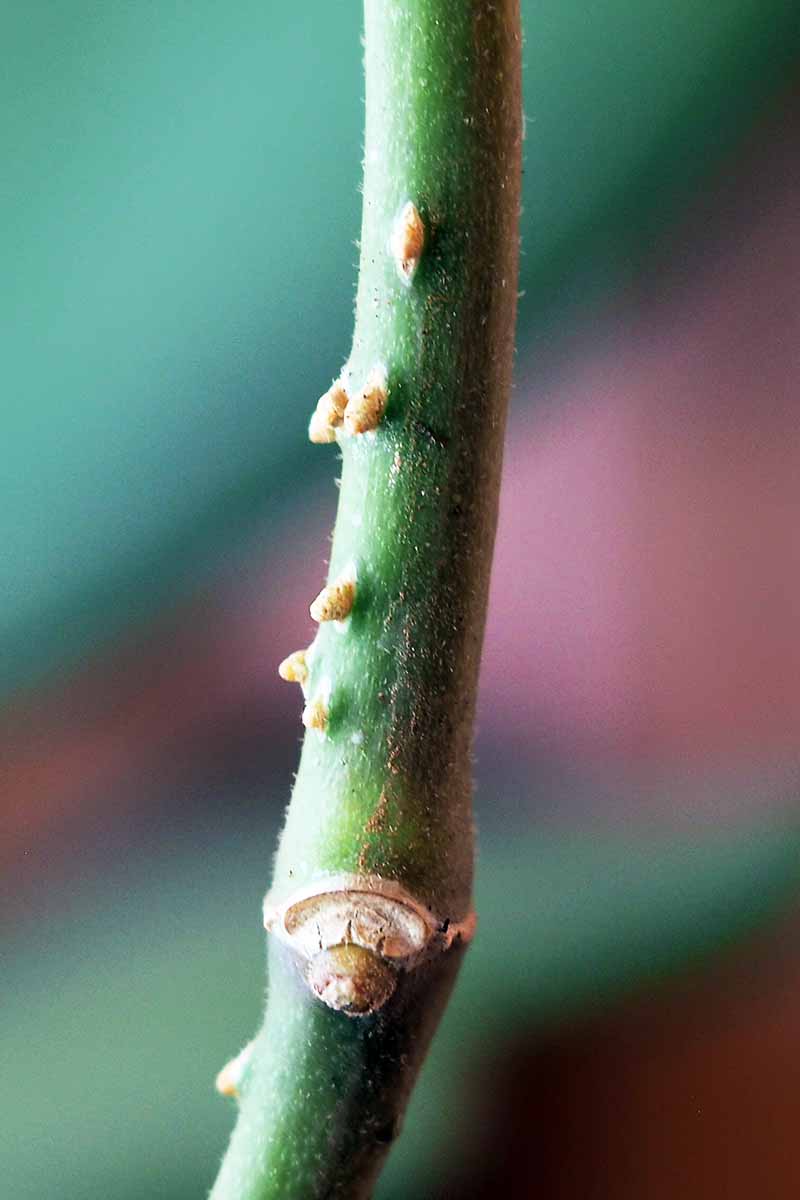
This method involves laying a vine across a pot of soil and letting it root there. Only after it has rooted do you cut the vine from the parent plant.
In fact, many hoya growers find their plants doing this of their own accord – a long wax heart vine will sometimes take advantage of a nearby pot to anchor itself in a neighboring plant’s potting soil.
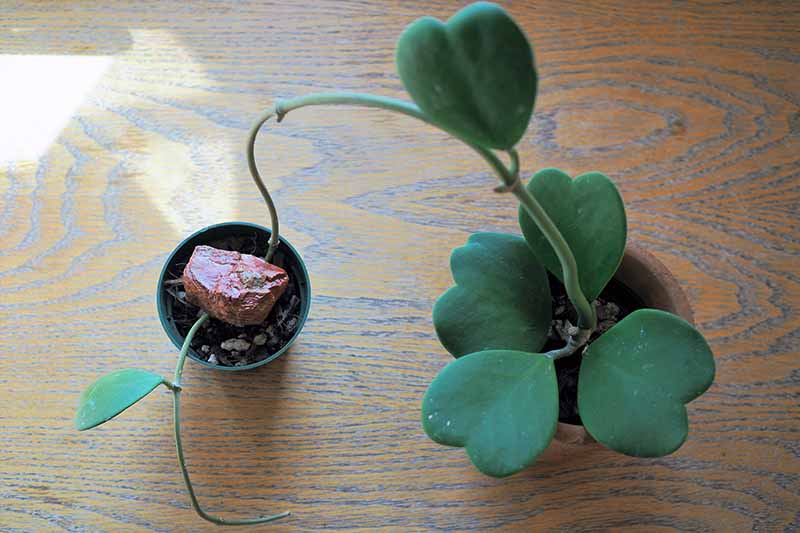
To hold the vine in place while it roots, you can either weigh it down with a small rock, or pin it down with a floral pin.
You can find floral pins for purchase from the Hotop Store, available via Amazon in packages of 120.

Spray the growing medium with a spray bottle to keep it moist while the vine roots itself in the new pot.
Once the vine has taken root, you can use a pair of sterilized pruners to sever the new wax hearts from its parent.
How to Grow
This hoya is one of the easier ones to grow, but it helps to learn the plant’s preferences so you can keep it happy and healthy.
Choosing a Plant
Make sure you start off on the right foot by choosing a healthy houseplant. Avoid specimens with yellowing or browning leaves, or signs of disease or pest problems.
If you’re opting for a single-leaf Valentine hoya, choose one that isn’t half buried in the soil.
Specimens that only have the tips of their hearts in the soil will be more likely to have nodes anchoring them into their growing medium, meaning they will be more likely to produce vines one day.
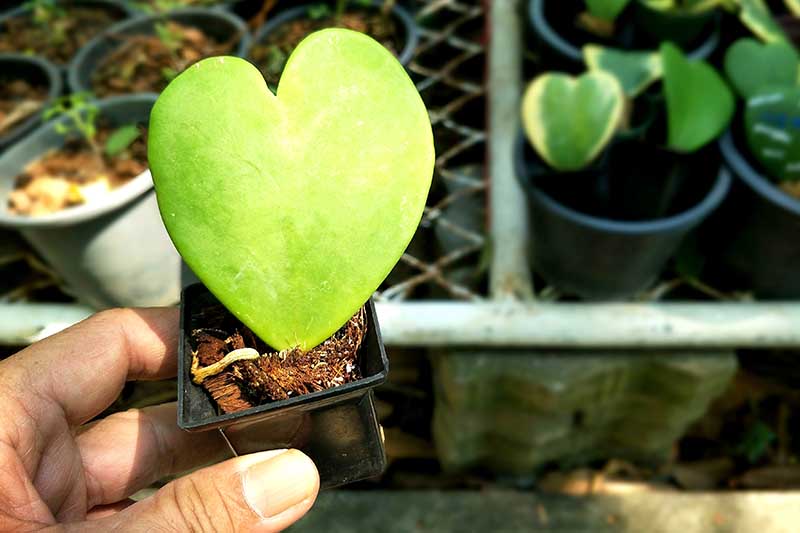
When purchasing a single-leaf Valentine hoya, unless you’re willing to treat the poor thing as a disposable object, make sure it actually has some suitable growing medium in the pot.
Some vendors sell these leaf cuttings in strange setups unintended to support plant life, such as with rocks glued down around them.
If ordering your wax hearts online, select a vendor with good reviews since you won’t be able to examine the plant in person.
And when purchasing a hoya in winter or summer, you may need to request a heat pack or cold pack, to keep the specimen in tip-top shape during its travels.
Also, if you have the option, choose a plant that’s growing in the right type of potting medium – you’ll learn more about this in the next section.
Soil
Providing your Valentine hoya with the right type of potting soil is probably the most important thing you can do for it.
Wax hearts can adapt to different light conditions and humidity levels, but if you use the wrong type of potting soil, it will be much more challenging for you to get your watering right.
On the other hand, using the right type of soil will make it very hard to overwater – which is a good thing!
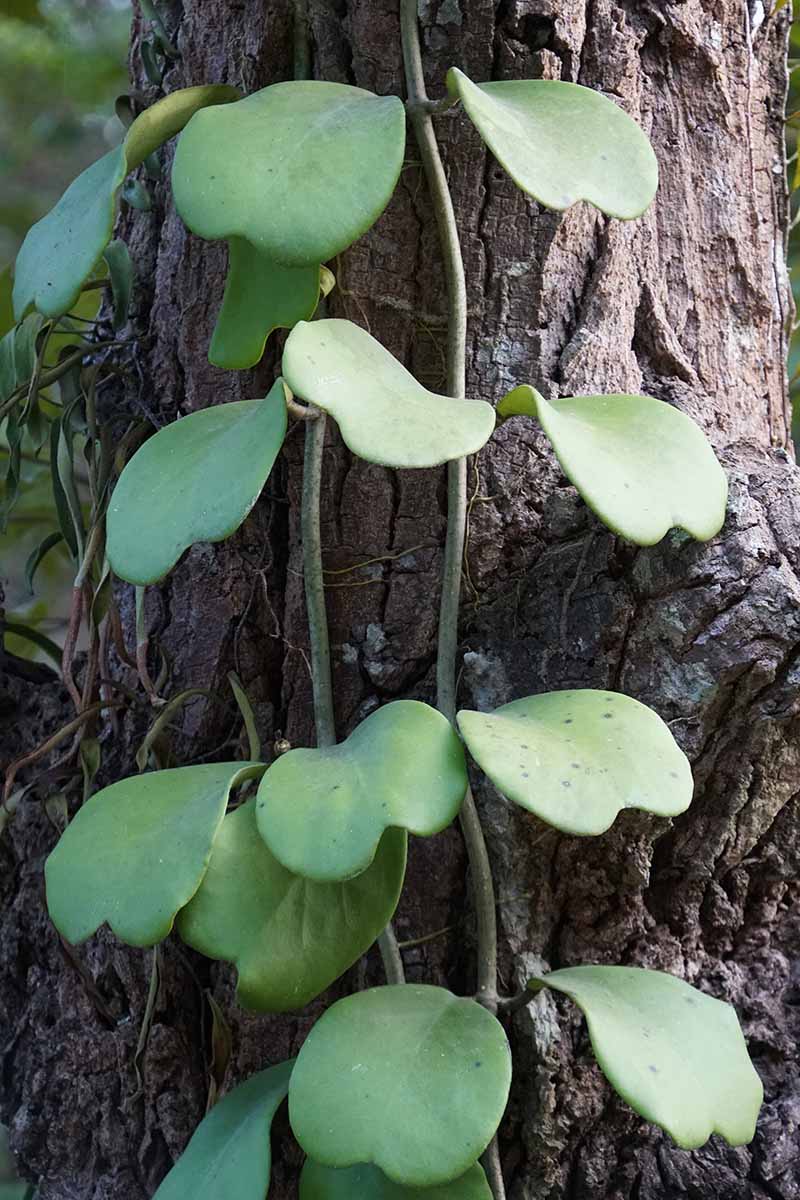
In its native habitat, this plant doesn’t grow in soil. It’s an epiphyte that grows in the crevices of tree bark.
That means the growing medium you choose for your hoya needs to drain well and fast – it should be quite chunky to allow your plant’s roots to receive the air and drainage they need.
The International Hoya Association recommends a succulent potting mix for these plants, and that’s what I use for my own hoyas.
My favorite is Tank’s-Pro Organic Cactus and Succulent Mix.

Tank’s-Pro Organic Cactus and Succulent Mix
It’s a peat-free mixture that contains coconut husks, pumice, and organic compost. You’ll find it available for purchase from Tank’s Green Stuff Store via Amazon in 16-quart bags.
Light
H. kerrii does best with bright, indirect light, but it can tolerate low-light situations as well.
Note that variegated cultivars may lose their variegation in low light conditions.
This species can tolerate some direct sun, but make sure this is not in the middle of the day, and keep direct sun exposure limited to two to four hours a day.
Water
As an epiphyte, H. kerrii prefers to dry out between waterings. Your watering schedule will depend largely on what type of growing medium you use for potting this plant.
If you follow the soil recommendations offered above, a good point of reference is to water your plant once a week.

You will want to adjust this based on your own conditions – how warm and sunny it is in your home, what type of container your houseplant is potted in, and the season. Hoyas should be watered a bit less during winter.
When it’s time to water, your plant will remain happiest if you offer it rainwater, distilled water, or filtered water. That’s because tap water, in addition to chlorine, can contain many impurities which may affect our houseplants.
How do you know if your plant is getting the right amount of water?
If you spot any leaves that look wrinkled and like they’re shriveling, you are likely not watering enough. On the other hand, if you have any leaves that are turning yellow and falling off, you’re probably overwatering or have very soggy soil.
If your specimen has lots of leaves at its base that are covering its soil well, make sure to water it with a watering can intended for houseplants – these will allow you to reach all areas of your plant’s soil evenly and with great precision.
Temperature
As a tropical species, H. kerrii will be happy in a temperature range between 65 and 80°F, which – lucky for us – corresponds with the conditions usually found in our climate-controlled homes.
This plant is not cold hardy and it can be killed if exposed to temperatures under 30°F.
But that doesn’t mean it will be fine at chilly temperatures above 30°F either – cold temperatures can still damage the plant and may cause leaves to turn yellow, so try to keep this species above 60°F.
Along with making sure it is situated in a comfortable temperature range, try to avoid exposure to cold and hot drafts of air.
You may not realize that there’s a cold draft coming from a door or window – or an overly hot zone next to a radiator or fireplace – but your houseplant sure will.
To keep it happy, place it in a location where it will be free from such temperature extremes, and once you find its happy place, try not to move it around.
Humidity
H. kerrii is a tropical species that has moderate humidity needs – between 25 and 49 percent.
Before you assume the relative humidity in your home is too low, check it.
I like using a combo thermometer and humidity gauge to keep an eye on the conditions in my home and to make sure my houseplants stay comfortable.
To do this, I prefer to use an old school, analog gauge – one that requires no batteries or electricity, such as this model from Little Good, available for purchase via Amazon.

Thermometer and Humidity Gauge
If you do determine that your humidity could use some boosting, you have several different options.
One of the easiest is to group some of your houseplants together to create a somewhat more humid microclimate.
Another method is to place an open container of water next to your plant – this could be your watering can, a decorative bowl, or a teacup. The evaporating water from the container will humidify the air around your plant.

7 by 9 Inch Pebble Humidity Tray
If you don’t like that idea, another way of achieving the same goal is to place your plant on top of a tray filled with pebbles and water, such as this seven-by-nine-inch humidity tray from 9GreenBox, available via Amazon.
Growing Tips
- Provide bright, indirect light.
- Allow soil to dry between waterings.
- Use a chunky potting medium with excellent drainage.
Pruning and Maintenance
Keeping your sweetheart hoya happy won’t be too hard if you follow the tips outlined above. As for further maintenance, it really depends how involved you want to get with your plant.
Are you in this relationship for keeps? Here are some additional tips:
Cleaning Leaves
Your wax hearts’ big succulent leaves will be all the more attractive (and healthy!) if you give them a cleaning whenever you water your plant.

Rather than using any specially formulated products for this task, a damp paper towel or rag will do the job just fine.
Gently wipe the dust from your plant’s leaves, leaving them dry rather than wet.
Fertilizing
Many hoya growers prefer not to fertilize their hoyas at all, so crossing this item off from your houseplant care list is certainly an option.
If you do decide to fertilize yours, use a gentle fertilizer, such as worm compost tea.
I like how convenient the worm compost tea bags from TeaDrops are, and they offer a formula especially designed for epiphytes such as hoyas.

Tea Drops Organic Fertilizer for Orchids and Air Plants
You can find TeaDrops Organic Orchid Bromeliad and Air Plant Fertilizer from the TeaDrops store, available via Amazon.
Only apply fertilizer during the spring and summer when the plant is actively growing.
Pruning
Pruning your houseplant won’t be a necessity unless you want to reshape your plant, propagate it, or trim off unsightly leaves.
Unless you are trying to reshape your plant, don’t prune off its long bare tendrils – new leaves and flowers will eventually grow from these vines.
When pruning, make sure to sterilize your scissors or pruning snips by wiping them down with rubbing alcohol or hydrogen peroxide first. This will help to prevent unintentionally spreading pathogens to your beloved houseplant.
You can make good use of any healthy cuttings you take by propagating them into new specimens, which you can use to expand your collection, trade, or hand out to loved ones.
Trellising and Staking
While these plants can grow in hanging baskets with their vines cascading down, it can be fun to train their long, climbing tendrils to grow on a trellis or up a stake.
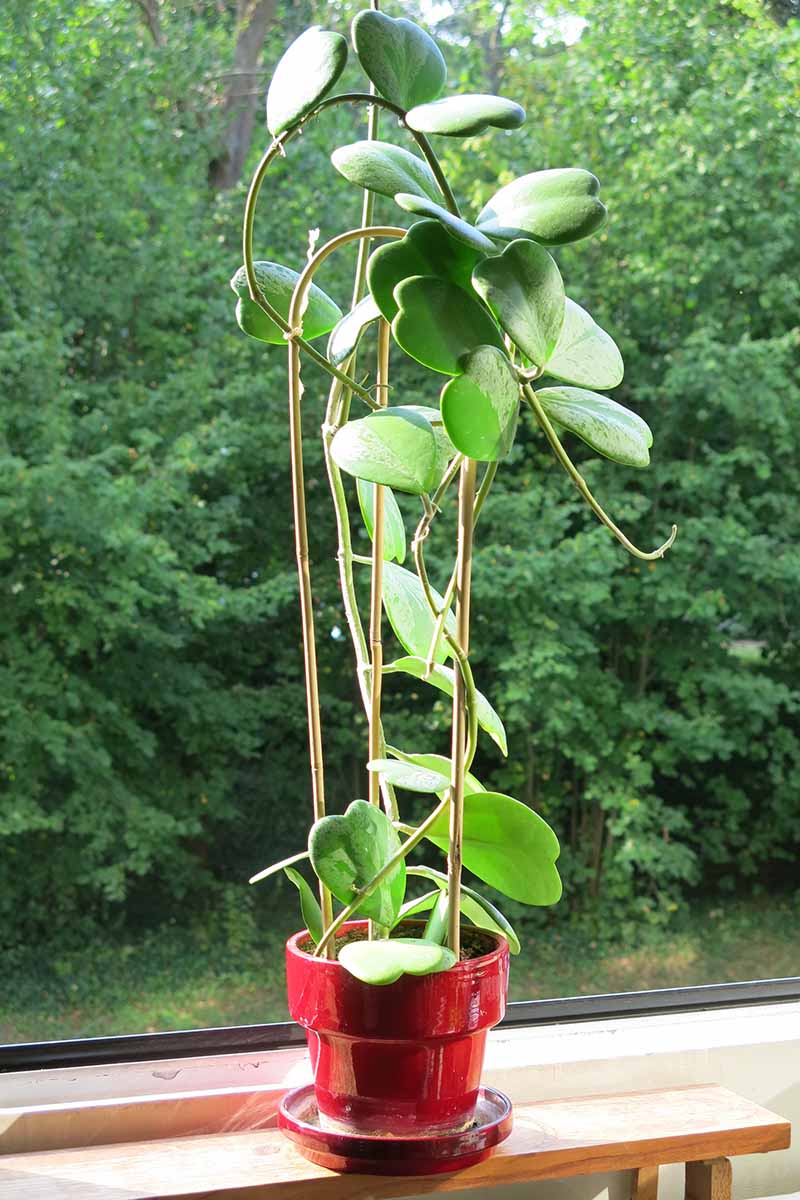
Since wax hearts have large, heavy leaves, choose a sturdy structure, such as this two-foot-tall bamboo ladder trellis, available from Cambaverd via Amazon.

3-Pack of 24” Bamboo Ladder Trellises
You can weave the vines in and out of the trellis to secure them, or attach them with plant clips if you prefer.
If the vines get too long for the trellis, you can simply wrap them up and down or around the trellis multiple times, which will create a fuller looking plant.
Alternatively, if your sweetheart hoya is in a hanging basket, you can use the hanger or chain as a trellis and train your plant’s vines to grow on this.
Flowering
If you’re looking forward to seeing flowers on your Valentine hoya, you’ll need to understand a little plant anatomy first.
H. kerrii produces flowers on a structure called a “peduncle.”
The peduncle looks like a short stem emerging perpendicularly from the vine.
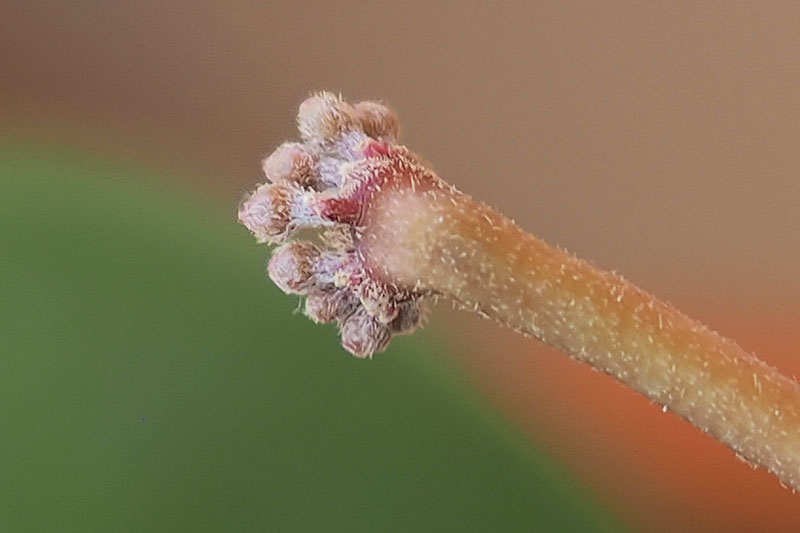
A bloom spur will form at the end of a peduncle, and flowers will grow from the spur. The bloom spur will remain on the peduncle, and get longer with each bloom cycle.
Since flowers bloom from the same peduncle over and over, you’ll want to look for these on your vines and take care not to remove them.
In addition to understanding the function of these small stems and leaving them in place, there are a few other things you can do to encourage flower production from a sweetheart hoya.
First, make sure to position it where it’s exposed to bright light. Lower light exposure can prevent the plant from producing flowers.
Next, avoid moving the plant when it’s in flower production mode. Hoyas don’t take kindly to being moved – even less so when they are in bloom.
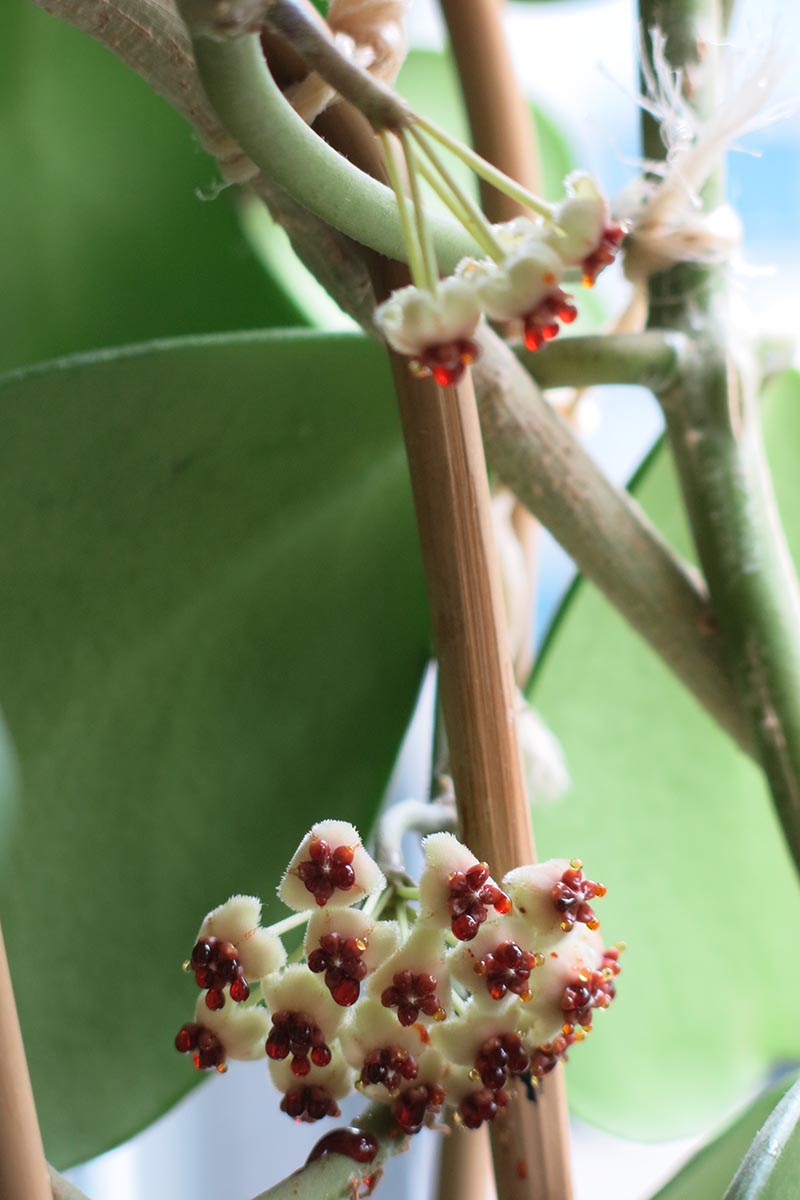
Exposure to slightly cooler winter temperatures and less frequent winter watering will also help to encourage flowering.
If your plant responds to your attention (and its own biological imperative!) by producing flowers, be aware that H. kerrii can produce large amounts of nectar from its flowers.
This nectar can drip and make a bit of a mess on whatever happens to be underneath, so you may want to keep this in mind when situating your houseplant.
If this nectar drips on your hoya’s leaves it can potentially attract pests, as well as giving fungal pathogens a foothold – so wipe any nectar off of your houseplant’s leaves with a damp cloth.
Repotting
Before we cover how to repot your plant, first let’s talk about when you shouldn’t repot.
If your wax hearts is blooming or is about to bloom, you’ll want to wait to repot it until after it has finished flowering.
Also, if your plant just arrived as an online purchase, it will need some time to recover from its journey and to acclimate to its new location. If possible, give it a couple of months to settle in before you put it through yet another stressful experience such as repotting.
And if your plant is potted in the right type of soil, you may not ever need to repot it! Most hoyas won’t need a pot that’s larger than four or five inches throughout their lives.
H. kerrii will grow more abundantly and flower better if it is rootbound, so don’t get into the habit of repotting your houseplant frequently – it really doesn’t need it, and might even get upset if you do!
You can even wait to repot until your plant is so rootbound that it is splitting its pot.
On the other hand, there is a time when you may want to repot this houseplant earlier than its root system requires – when you have a specimen that seems to be planted in the wrong type of soil.
The repotting process will go more smoothly if you wait until the day after you water to repot.
And the best time of year to undertake this task is during spring or summer, when the plant is actively growing.
However, if you have a specimen that is planted in the wrong type of soil, you may want to go ahead and repot anyway, even if it’s the wrong time of year.
When you feel that it’s time to repot, make sure to review our recommendations for choosing an appropriate type of soil as described above so that you select the best type of growing medium for your houseplant.
You won’t need a deep pot for this epiphyte. And if you’re just changing out the soil because it’s the wrong type, you won’t need a new pot at all, you can reuse the same one.
Remove the plant from its pot. Don’t try to remove all of the potting medium from the plant’s root ball. Instead, just brush away the soil from the plant’s outer roots.

Place a little of the new potting medium in the bottom of the pot.
Put the root ball of your unpotted hoya inside the pot, and adjust the soil level so there’s about half an inch to one inch between the hoya’s crown (the place where its stem meets its roots) and the rim of the pot.
If the crown is sitting too high, lift your wax hearts out and remove some of the growing medium from beneath the root ball.
If its crown is too deep within the pot, lift it out and add more growing medium beneath it.
Once your specimen is well-situated within its pot, backfill along the sides of the root ball with the new growing medium.
Make sure to get all of the plant’s roots tucked into the pot.
Return your wax hearts to its usual location.
Rather than watering it in immediately after repotting, wait until your next scheduled watering visit.
Cultivars to Select
Ready to look into some options for getting started with a Valentine hoya?
One thing you’ll want to know before you make a purchase is that this species of houseplant is priced based on the number of leaves it has on its vine.
Kerri
The original species has medium-green leaves that are large, fleshy, and heart-shaped with no variegation or other patterns.
If you find the original H. kerrii to be a charmer of a houseplant, you’ll find a specimen in a four-inch pot with four to six leaves from California Tropicals, available via Amazon.

H. Kerrii Live Plant in 4” Pot with 4-6 Leaves
In addition to the species plant, there are also a few cultivars of H. kerrii that you can add to your collection.
Albomarginata
‘Albomarginata’ is a naturally occurring variety of the species, and it is also referred to as H. kerrii ‘Variegata.’ As you’ll guess by this name, it has variegated foliage.
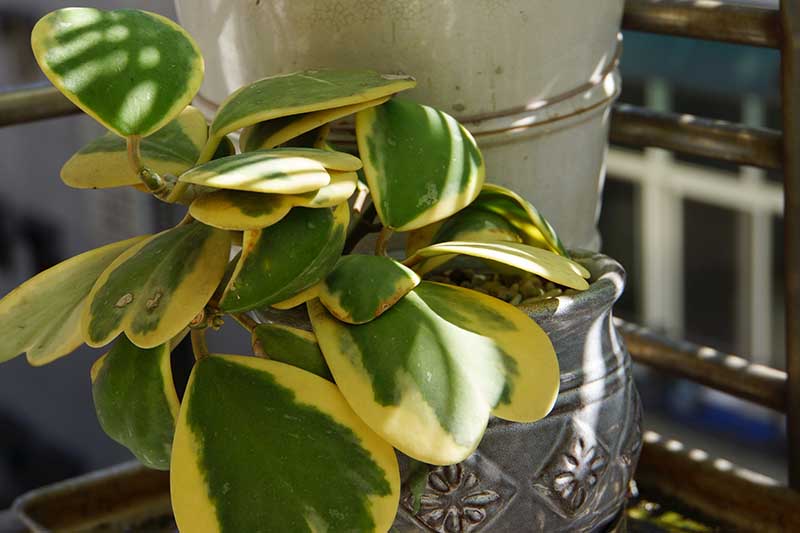
Commonly known as “variegated wax hearts,” this cultivar has creamy yellow margins on its big, heart-shaped, medium-green leaves.
You can purchase a variegated wax hearts in a four-inch pot with at least three leaves from California Tropicals, via Amazon.
Albomarginata Reversed
‘Albomarginata Reversed’ is like variegated wax hearts – only with a twist!
Also called ‘Reverse Variegata’ or “reverse variegated wax hearts,” this rare cultivar has green leaf margins with yellow variegation on its leaf centers.
Splash
‘Splash’ is another cultivated variety of H. kerrii with a fascinating leaf pattern.

This hard-to-find cultivar has intriguing splashes of silvery gray on its large, heart-shaped green leaves.
Managing Pests and Disease
Hoya kerrii aren’t particularly problematic houseplants when it comes to pests or diseases.
Nevertheless, you will want to know what to be on the lookout for, just in case – particularly when screening newly acquired specimens or bringing houseplants in after a summer vacation spent outdoors.
Insects
Some pests are found on hoyas more often than others. Here’s what to look for:
Aphids
Aphids are one of the most frequent pests to target hoyas. Your wax hearts can serve not only as their condo but also their breakfast, lunch, and dinner buffet as they suck nutrients from stems and leaves.
Aphids can cause hoya leaves to become distorted and plants to become stunted.
There’s one type of aphid in particular that tends to enjoy hoyas. That’s the oleander aphid, also known as Aphis nerii.
This aphid has a bright yellow body with black legs and is particularly fond of members of the milkweed family, such as hoyas. Your houseplant may pick up such critters if you let them spend the summer months outdoors.
If you notice an infestation on your houseplant, first try removing the pests with a strong jet of water from the garden hose.
You can learn more about how to handle an infestation by reading our article on controlling and eradicating aphids.
Mealybugs
The dreaded mealybug – it’s a pest that would almost be cute, if it weren’t so insidious.
These small insects might appear to be little bits of fluff stuck to your plant’s stem. Meanwhile – cue ominous music – they are actually sucking the life from your houseplant.
Found not only on stems, but also frequently on the undersides of leaves, mealybugs can weaken your plant as they feast on it.
While pesky and detrimental, luckily, they are fairly easy to spot on heart-leaf hoyas thanks to their large leaves.
When you acquire a new specimen, inspect it well for these critters, checking both the undersides of leaves and the plant’s vine, particularly right above the soil.
To learn how to handle an infestation, be sure to read our guide to mealybug pest control.
Scale
Scale insects will make themselves at home on your Valentine hoya if given the chance.
These insects gather on stems and leaves, looking like little green, tan, or brown spots, often blending in with the plant so well that you don’t notice them.
Like aphids and mealybugs, scale insects feed on the plant, stealing nutrients, eventually causing it to become unwell and sometimes die.
Neem oil can be used as a nontoxic treatment for plants infested with scale. When applying this product, be sure to spray it on all the nooks and crannies of the plant, and especially at the crown. Be prepared to reapply in a week or two.
You can find Monterey neem oil available for purchase at Arbico Organics.
To learn more about how to identify and control scale insects, read our guide.
Disease
Wax hearts aren’t very prone to disease, and most types are preventable. Here’s what to look for and how to prevent these ailments:
Botrytis Blight
If you notice gray patches on your plant’s foliage or discolored flecks on the flowers, it might be infected with botrytis blight, also known as “gray mold.”
Botrytis blight is a fungal disease that can affect many garden plants, but also other houseplants such as cyclamen, lucky bamboo, and ponytail palm.
This disease is caused when cool, damp conditions encourage fungal organisms of the Botrytis genus to set up camp on your houseplant’s foliage.
To prevent this condition, make sure to allow adequate airflow around your plant, and when watering, pour water directly onto the soil instead of over the plant’s foliage.
If you give your wax hearts a cleansing shower, do so in the morning and only on warm days, to allow time for the water to dry.
Once an infection breaks out, neem oil can be applied as a nontoxic fungicide. But don’t forget to correct any problems that led to the outbreak in the first place!
Edema
Another disease that might strike your wax hearts is edema – but luckily, this one is non-infectious.
Edema is a physiological ailment that can occur in succulent plants such as hoyas when the plants receive too much water too quickly.
If conditions are right, the plants are unable to get rid of excess water and their cells can become oversaturated, stretching out before they eventually collapse.
This causes unattractive tan or black spots on the leaves.
Correcting the conditions that led to this problem won’t cause these spots to go away, but it will prevent new ones from forming.
To prevent these spots, proper watering is important, as well as judicious fertilizing.
Root Rot
Just like edema, root rot is another plant disease that is easy to prevent.
Unfortunately, once you notice yellow leaves are falling off your plant, a common sign of root rot, it may be too late – so prevention is the best strategy.
This disease occurs when plants are allowed to have continually soggy soil, either via overwatering, a lack of drainage, an oversized pot, or allowing the plant to sit in a saucer of water for an extended period.
If your wax hearts’ roots remain in waterlogged soil, they can be deprived of oxygen, which will eventually start to kill the plant through dehydration. Certain species of fungi may strike under these conditions as well.
Using a well-draining potting medium, such as the one recommended in the soil section above, making sure your pot drains well, and refraining from overzealous watering will all help to prevent this sickness.
If you find that your hoya is struck with root rot, first decide on the cause, let the plant’s soil dry, and repot into a better potting soil, possibly with a smaller pot as well, if needed.
Best Uses
Because of their heart-shaped leaves, single-leaf sweetheart hoyas are often given as Valentine’s day gifts.

However, more established specimens with vines and more abundant foliage can also be given as gifts to commemorate this celebration of love and romance.
Vining specimens may be allowed to spill out of a hanging basket, or trained to climb on an assortment of different trellises.
And since they are nontoxic, they make excellent houseplants for those with young children or fur babies in the home.
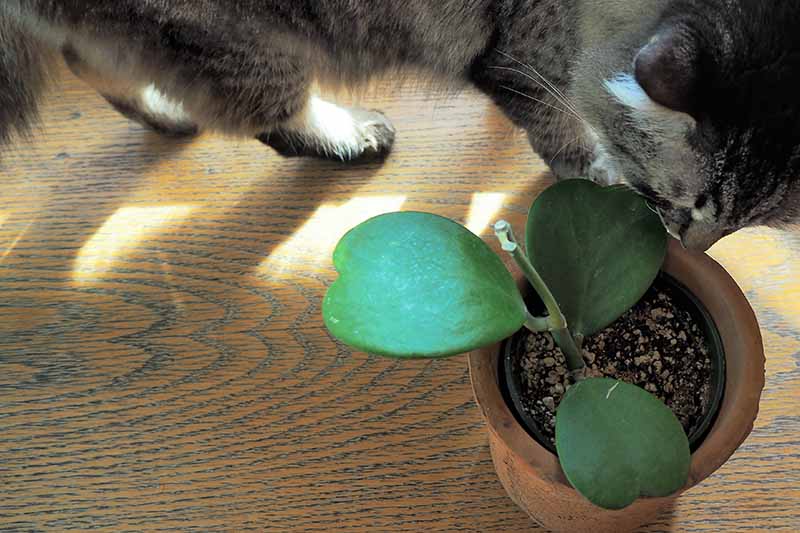
And of course, if you live in USDA Hardiness Zones 10a-11b you can grow this plant outdoors year round.
Quick Reference Growing Guide
| Plant Type: | Evergreen vine | Flower/Foliage Color: | White and russet/medium green, green variegated with creamy yellow, medium green with silvery gray splashes |
| Native to: | Cambodia, Java, Laos, Malaysia, Thailand, and Vietnam | Soil Type: | Chunky succulent growing medium |
| Hardiness (USDA Zone): | 10a-11b | Soil pH: | 6.1-7.3 |
| Bloom Time: | Varies | Soil Drainage: | Requires excellent drainage |
| Exposure: | Bright, indirect light | Companion Planting: | Peperomia, succulents |
| Height: | 10+ feet | Uses: | Hanging baskets, trellises, interiorscapes |
| Spread: | 1-2 feet | Order: | Gentianales |
| Growth Rate: | Slow | Family: | Apocynaceae |
| Water Needs: | Low-moderate, depending on growing medium | Subfamily: | Asclepiadoideae |
| Maintenance: | Low | Genus: | Hoya |
| Tolerance: | Humidity, drought | Species: | Kerrii |
| Common Pests: | Aphids, fungus gnats, mealybugs, scale, shore flies, spider mites, thrips | Common Diseases: | Botrytis blight, edema, root rot, stem rot |
Natch, You’ve Met Your Match
We’ve reached the end of this guide, but actually, it’s just the beginning. Let’s celebrate your new or renewed relationship with your sweetheart hoya! Cheers!
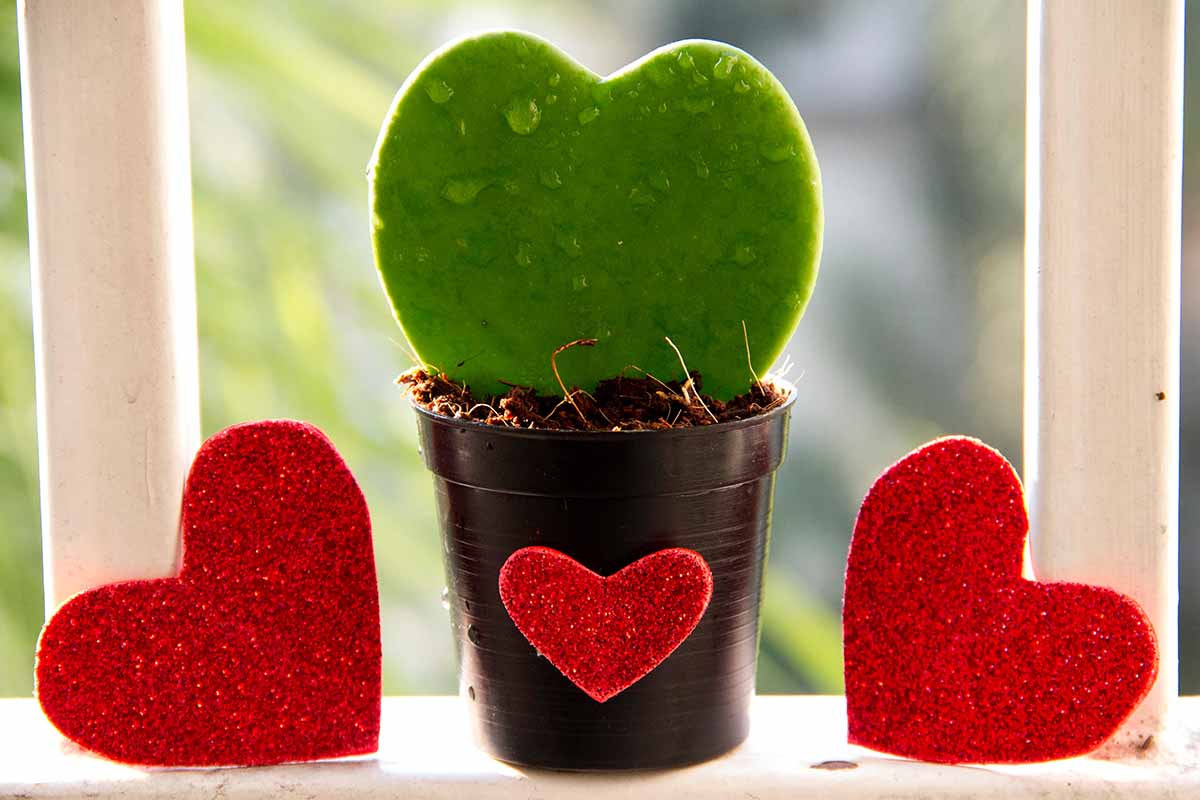
If you have any of your own tips for making this sweetie of a plant happy, feel free to share them with our readers in the comments section below.
And if you started your wax hearts adventure with a single leaf cutting, tell us how it went – did it produce a vine for you, or has it remained un unchanging, single green leaf?
Yes, I know, your plant love is immense, but nonetheless, your Valentine hoya might enjoy the company of some plant buddies, too. We have additional houseplant options for you right here:
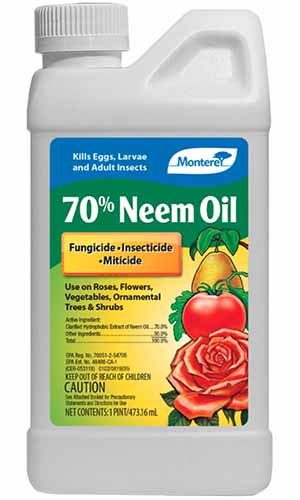
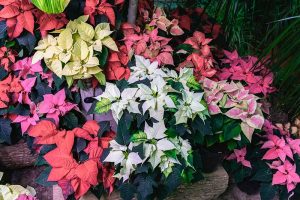
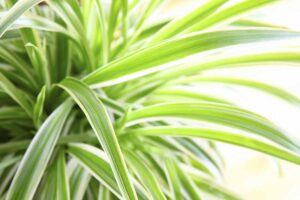
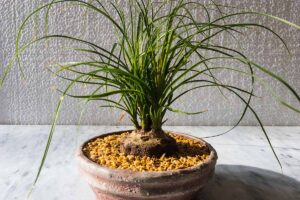
I really enjoyed this article! Thanks…I am proud to share that I was one of the lucky ones!! I received a single leaf heart Hoya for Mother’s Day three years ago .. I was amazed at how cute it was… I put it in my garden window .. and voila a year later I noticed something emerging from the soil .. since I had no knowledge of these cute plants I started to investigate… it was another stem and soon a little leaf emerged.. I was so thrilled! Now in it’s third year I have 30 heart leafs… I’m hoping… Read more »
Hi Lia, Thanks for sharing that your single sweetheart hoya leaf grew into a whole plant! It sounds like your plant is extremely happy and healthy with the care you are giving it – congratulations! As for blooming – have you spotted a peduncle on your plant? It will look like a short stem. Your plant won’t bloom until it produces a peduncle. In any case, you can go ahead and propagate it, even if it does have a peduncle. However, I would recommend leaving any peduncles on the parent plant rather than taking that section of stem for propagating.… Read more »
Hi, I just want to mention a few things that “maybe” you have wrong in thus article. So for plants technically nearly all cells are totipotent (they can differentiate into any other cell). The degree of totipotency and environmental stress is what determines success. You mention single leaf cuttings likely cannot grow to a full plant but that isn’t correct. Pull your leaf out and if it has grown roots it will have root meristems. If it has root meristems it can theoretically dedifferentiate into apical meristems. Now this is pure probability and reliant on appropriate environment. Try pulling your… Read more »
Hi Kyle,
Thanks for this in-depth look at plant cell biology! However, it still sounds like leaf cuttings are less likely to grow into new plants than stem cuttings. Readers, if any of you try Kyle’s recommendations for encouraging leaf cuttings to grow vines, do let us know.
Thanks again Kyle for sharing your information!